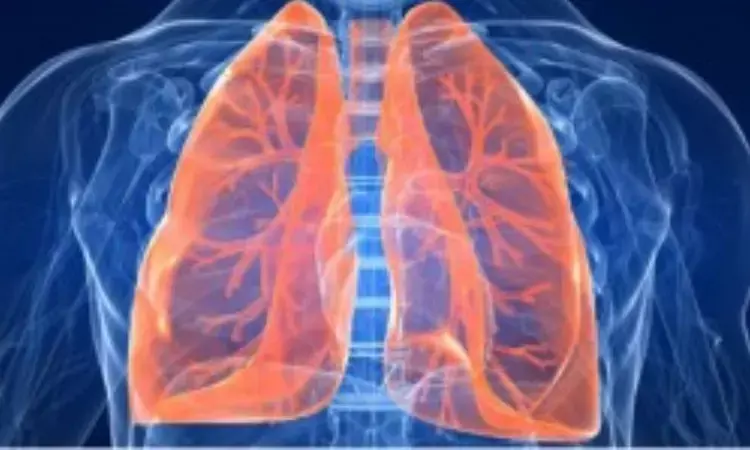- Home
- Medical news & Guidelines
- Anesthesiology
- Cardiology and CTVS
- Critical Care
- Dentistry
- Dermatology
- Diabetes and Endocrinology
- ENT
- Gastroenterology
- Medicine
- Nephrology
- Neurology
- Obstretics-Gynaecology
- Oncology
- Ophthalmology
- Orthopaedics
- Pediatrics-Neonatology
- Psychiatry
- Pulmonology
- Radiology
- Surgery
- Urology
- Laboratory Medicine
- Diet
- Nursing
- Paramedical
- Physiotherapy
- Health news
- Fact Check
- Bone Health Fact Check
- Brain Health Fact Check
- Cancer Related Fact Check
- Child Care Fact Check
- Dental and oral health fact check
- Diabetes and metabolic health fact check
- Diet and Nutrition Fact Check
- Eye and ENT Care Fact Check
- Fitness fact check
- Gut health fact check
- Heart health fact check
- Kidney health fact check
- Medical education fact check
- Men's health fact check
- Respiratory fact check
- Skin and hair care fact check
- Vaccine and Immunization fact check
- Women's health fact check
- AYUSH
- State News
- Andaman and Nicobar Islands
- Andhra Pradesh
- Arunachal Pradesh
- Assam
- Bihar
- Chandigarh
- Chattisgarh
- Dadra and Nagar Haveli
- Daman and Diu
- Delhi
- Goa
- Gujarat
- Haryana
- Himachal Pradesh
- Jammu & Kashmir
- Jharkhand
- Karnataka
- Kerala
- Ladakh
- Lakshadweep
- Madhya Pradesh
- Maharashtra
- Manipur
- Meghalaya
- Mizoram
- Nagaland
- Odisha
- Puducherry
- Punjab
- Rajasthan
- Sikkim
- Tamil Nadu
- Telangana
- Tripura
- Uttar Pradesh
- Uttrakhand
- West Bengal
- Medical Education
- Industry
Lung hyperinflation strongly associated with coronary artery disease in smokers: Study

Pittsburgh, PA: A recent study has found a strong association between lung hyperinflation and clinical and subclinical coronary artery disease (CAD) in smokers, including those having airflow obstruction. Further, the study found no association of FEV1 and emphysema with CAD, after accounting for lung hyperinflation. The study is published in the Chest journal.
Hyperinflation is caused by anything that limits the flow of air out of the lungs. The most common culprit is COPD (chronic obstructive pulmonary disease), caused mainly by smoking. Frank C. Sciurba, Department of Medicine, University of Pittsburgh, Pittsburgh, PA, and colleagues addressed the question of which pulmonary phenotypes are associated with coronary artery disease (CAD) in smokers.
The researchers analyzed the data from the University of Pittsburgh COPD Specialized Center for Clinically Oriented Research (SCCOR) cohort (n = 481) and the Genetic Epidemiology of COPD (COPDGene) cohort (n = 2,580). Participants included current and former smokers with > 10 pack-years of tobacco exposure. Because of methodologic differences, data from the two cohorts were analyzed. Lung hyperinflation was assessed by plethysmography in the SCCOR cohort and by inspiratory and expiratory CT scan lung volumes in the COPDGene cohort.
Subclinical CAD was assessed as the coronary artery calcium score, whereas clinical CAD was defined as a self-reported history of CAD or myocardial infarction (MI). Analyses were performed in all smokers and then repeated in those with airflow obstruction (FEV1 to FVC ratio, < 0.70).
Key findings include:
- Pulmonary phenotypes, including airflow limitation, emphysema, lung hyperinflation, diffusion capacity, and radiographic measures of airway remodeling, showed weak to moderate correlations (r < 0.7) with each other.
- In multivariate models adjusted for pulmonary phenotypes and CAD risk factors, lung hyperinflation was the only phenotype associated with calcium score, history of clinical CAD, or history of MI (per 0.2 higher expiratory and inspiratory CT scan lung volume; coronary calcium: OR, 1.2; clinical CAD: OR, 1.6; and MI in COPDGene: OR, 1.7).
- FEV1 and emphysema were associated with increased risk of CAD in models adjusted for CAD risk factors; however, these associations were attenuated on adjusting for lung hyperinflation. Results were the same in those with airflow obstruction and were present in both cohorts.
Sciurba and colleagues concluded, "subsequent studies should consider measuring lung hyperinflation and examining its mechanistic role in CAD in current and former smokers."
Reference:
The study titled, "The Association Between Lung Hyperinflation and Coronary Artery Disease in Smokers," is published in the CHEST journal.
DOI: https://journal.chestnet.org/article/S0012-3692(21)00889-8/fulltext
Dr Kamal Kant Kohli-MBBS, DTCD- a chest specialist with more than 30 years of practice and a flair for writing clinical articles, Dr Kamal Kant Kohli joined Medical Dialogues as a Chief Editor of Medical News. Besides writing articles, as an editor, he proofreads and verifies all the medical content published on Medical Dialogues including those coming from journals, studies,medical conferences,guidelines etc. Email: drkohli@medicaldialogues.in. Contact no. 011-43720751


